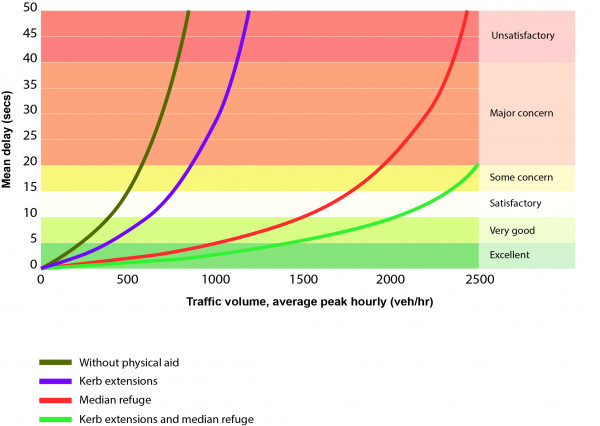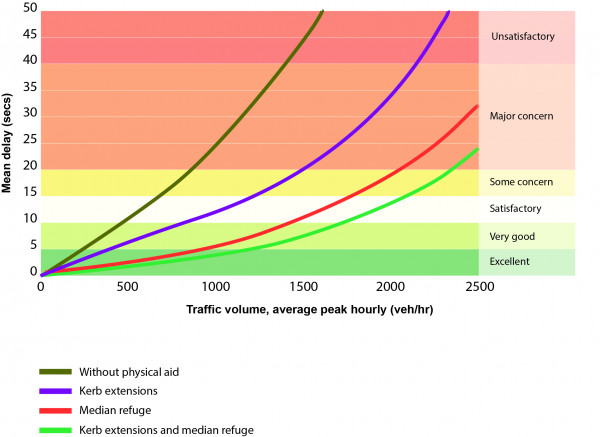Crossing aids or physical devices reduce the crossing distance and/or the number of lanes pedestrians need to negotiate at each stage. The crossing distance can be reduced through kerb extensions, medians and refuges. Median refuges and pedestrian refuges can also reduce delays to pedestrians and simplify the crossing task by allowing pedestrians to cross in two stages.
The two charts below illustrate the level of delay for pedestrians crossing a typical two-way, two-lane road with a 50km/h speed limit with various traffic volumes, and how this improves through the provision of crossing aids. The crossing distance without physical aids assumes a 14m kerb-to-kerb crossing distance; kerb extensions assume a 9m crossing distance; a median refuge assumes two 6m crossings; and kerb extensions and a median refuge assumes two 4.5m crossings.
Note that each chart varies according to inputs entered for flow type, number of lanes, lane widths, pedestrian profile and walk speeds.

Mean waiting delay for pedestrians crossing at various facilities on a two-lane, two-way urban road (uninterrupted flow).

Mean waiting delay for pedestrians crossing at various facilities on a two-lane, two-way urban road (interrupted flow).